Aligning on goals for the upcoming business quarters
TL;DR:
A bottom-up strategy enables the team to shape the direction of the company. This increases trust and motivation, because of individual buy-in. The method described below offers six steps to create such a strategy, starting with conducting a team workshop, clustering goals, identifying their dependencies and reflecting insights within the strategy artefact. As always — there is no one way to create this strategy. The proposed steps are one solution, but there are others. I welcome you to try it out and let me know how it works for you and your team. In our case, the strategy supports our OKRs and gives guidance to the team. Sparking discussions, a strategy is a great artefact to discuss possibilities, alternative routes and the status quo.
As a one year old start-up, we decided to use the OKR framework to structure our everyday work routines. In order to be able to prioritise, the following groundwork should be existent:
- Vision,
- Mission,
- Values,
- Strategy,
- Roadmap and
- OKRs.
Only if you have a goal and the ideally the components above defined, you know where to go and how to get there.
OKRs themselves are the „how“ to the „what“ as the bigger picture.
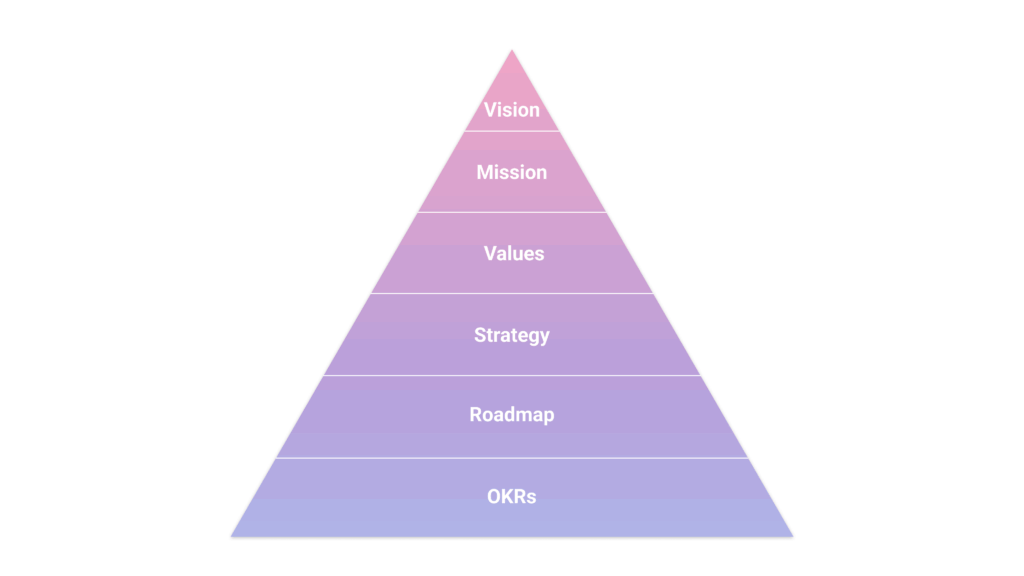
Why a bottom-up strategy makes sense
- Demystifying the blackbox
The journey to achieving to your goals is winding and not always clear. Visualising plans and making sure you plan ahead, can demystify the journey not just for you, but for your entire team. This obviously does not mean that you can foresee the future. Staying flexible and adjusting to ambiguity is key. I find it easier to flexibly adjust once you know where you want to go/how you aim to get there in the first place. - Getting buy-in from the team and increasing their motivation
Bottom-up processes — per definition — make sure the team is heard. They get a voice. They are able to take part in steering the direction of the company — of how to achieve goals. Especially in a start-up, this increases the transparency of decision making and therefore trust in the team. Great thing about strategies is the goal becoming actionable. The mystery ends — at least a bit. Because as mentioned before, we don’t have a crystal ball telling as if it’s the right way. But that’s ok — we can learn along the path. Important is to walk the path together — as a team. Having defined the strategy together, it increases the motivation of each individual in the team.
The result - our bottom-up strategy
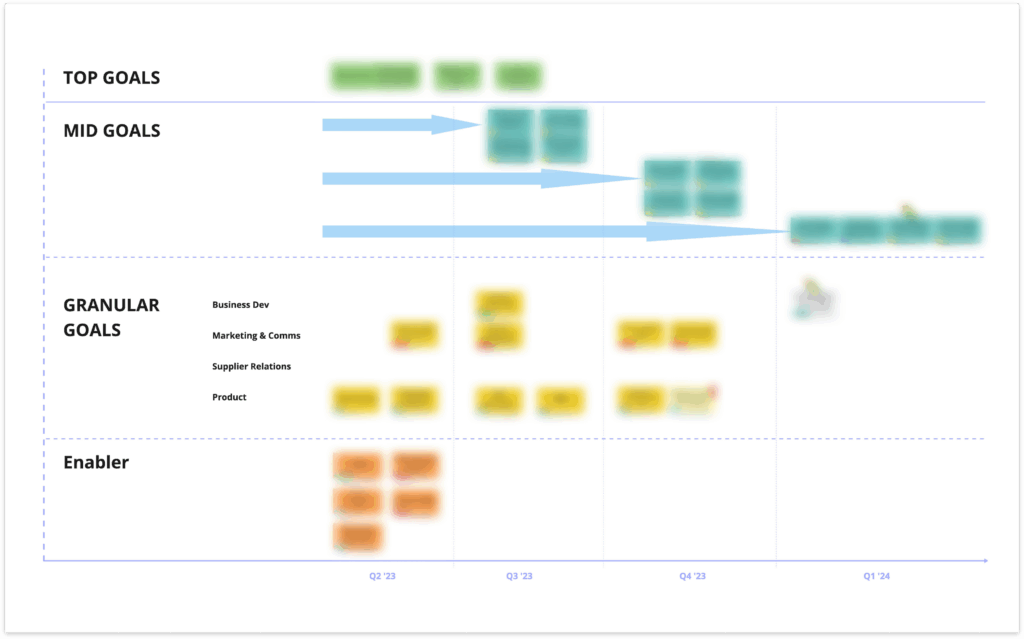
Upcoming quarters are represented as several different columns and display the timeline we work with. For us, we looked at the upcoming four quarters, though ideally you want to create a strategy for 3–5 years.
Rows showcase the different flight-level of goals, starting from top goals, mid goals, granular goals and what I called „enabler“. You can see that the further you move down the lanes, the more detailed the goals become. Please also note that most are interdependent – only a handful is able to stand on its own and be separate bundle.
So — an interdisciplinary approach to tackling this strategy is needed.
Go team!
How did we get to our bottom-up strategy?
1. Facilitating a workshop to kick-off discussions about goals
We started with a team session I facilitated and took two hours to all — the entire team — reflect and discuss. The session was in person, though we did work in Miro to take notes and document the discussion.
The first 10 minutes I spend walking the team through all artefacts we already had, which were somehow prioritizing timelines, services, features and products on a higher level. The goal of this was to find common ground and align on what has been discussed up until now. Ideally, the content of those artefacts would be embedded within our holistic strategy or alternatively archived if not needed any longer.
Next, we took 15 minutes to silently brainstorm upon five key questions:
- What do we want to have achieved within the next year?
- What should GovMarket (our company) look like in one years time?
- Which services do we want to offer in a year?
- How do we want to work in one year?
- What wishes, ideas and visions do we have in our different departments?
As mentioned above, the scope for our session was one year — four quarters.
Each person took notes, thus each and every department and therefore perspective was represented and taken into account. This is of course easier when the overall team consists of 8 individuals instead of a few hundred.
After we each thought about the questions raised, we continued discussing. This part took about 1,5 hours out of our agenda and is the heart piece of the workshop. Whilst discussing, we naturally started clustering post-it’s to get a better overview.
I recommend planning a generous amount of time for this if possible.
It was great to find out what each individual expects from the company as well as what they want to work towards to — what their priorities are.
At the end, we took five minutes to dot-vote. Each individual had 10 votes and could distribute them as needed. If something deserved special emphasise, multiple votes could be used.
The voting marked the end of our session. The groundwork has been done to create a one-year-strategy that would address needs and wishes of the team.
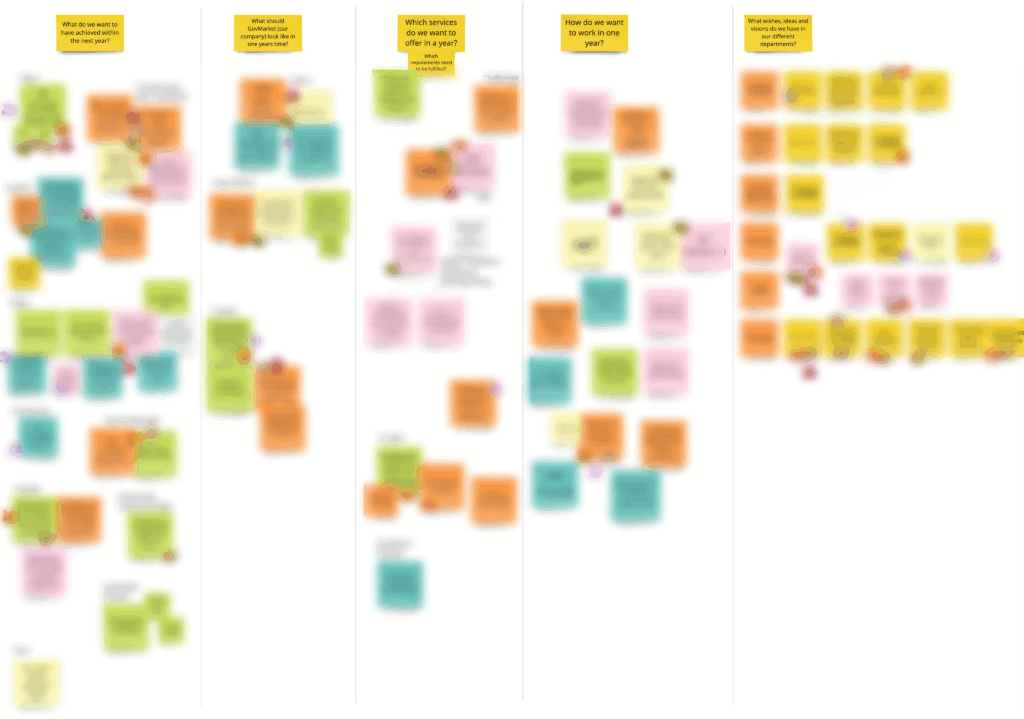
2. Synthesise insights
A a first step into synthesis, I sorted our post-it’s by the amount of votes. I wanted to get a clear understanding of what is most important to the team.
Bringing them into the correct order helped to get a first starting point for the one-year-strategy.

3. Categorising goals
It was clear, that this prioritisation was not enough, as it does not make sense to build a strategy upon popularity of elements only.
I noticed how goals were framed in different ways — some would state an overall goal, e. g. “Revenue generation through the marketplace”, others would be very specific, e. g. “Internal Brand-/Styleguide”.
Therefore, I decided to sort them by how specific the goal was stated, as they need to be addressed differently.
Whilst keeping the votes attached to the post-its, I clustered goals into “Objective known, solution unknown”, “In between”, “Hands-On — solution known” and “General goals”.
The goal of this exercise is to separate goals into “open to solutions” and “solution known“:
- Which tasks can be picked up right away? [“solution known“]
- Which tasks need to be more reflected upon and aligned on how to achieve them? [“open to solutions”]
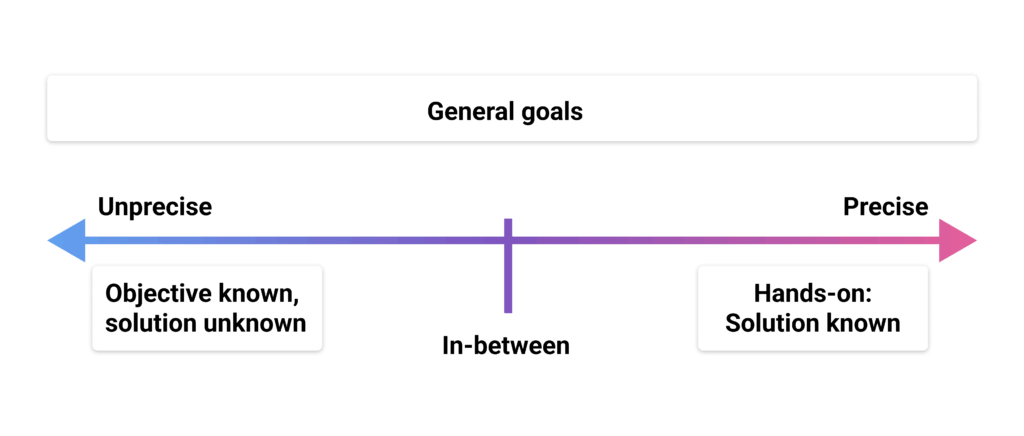
4. Content break-down and transfer
Up until here, multiple dot-votes, post-its and clusters have been created. It was time to streamline content, break it down into its essence and get it ready to be used for ‘5. Understanding dependencies and making them visible’.
Still working in Miro, I converted voting-icons into numbers and used a color coding, to highlight attributes.
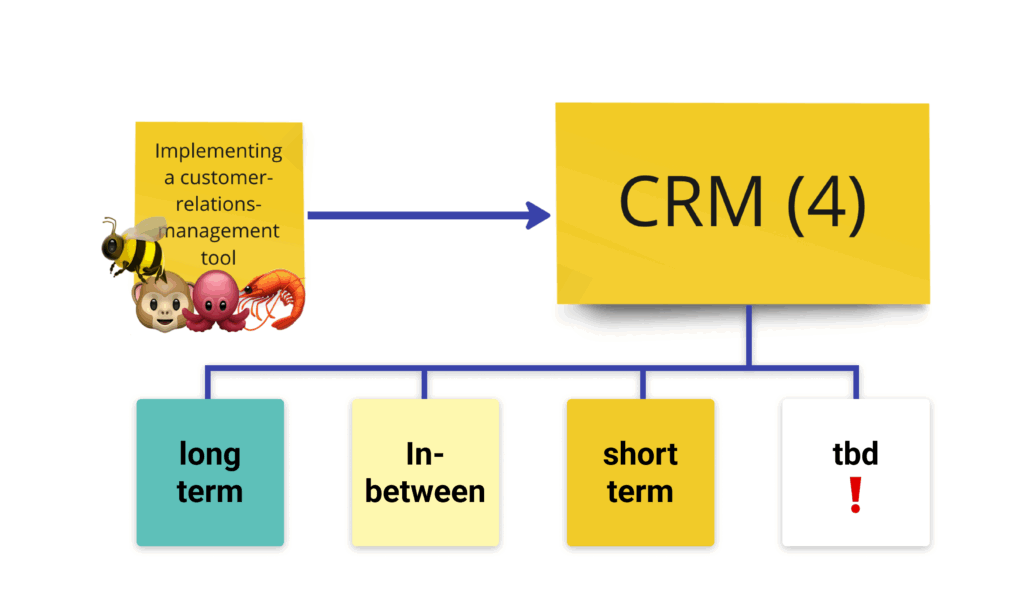
With this structure in place, I also kept the clusters from ‘3. Categorising goals’:
- General goals
- Objective known, solution unknown
- In-between [try to keep this column as small as possible]
- Hands-On — solution known
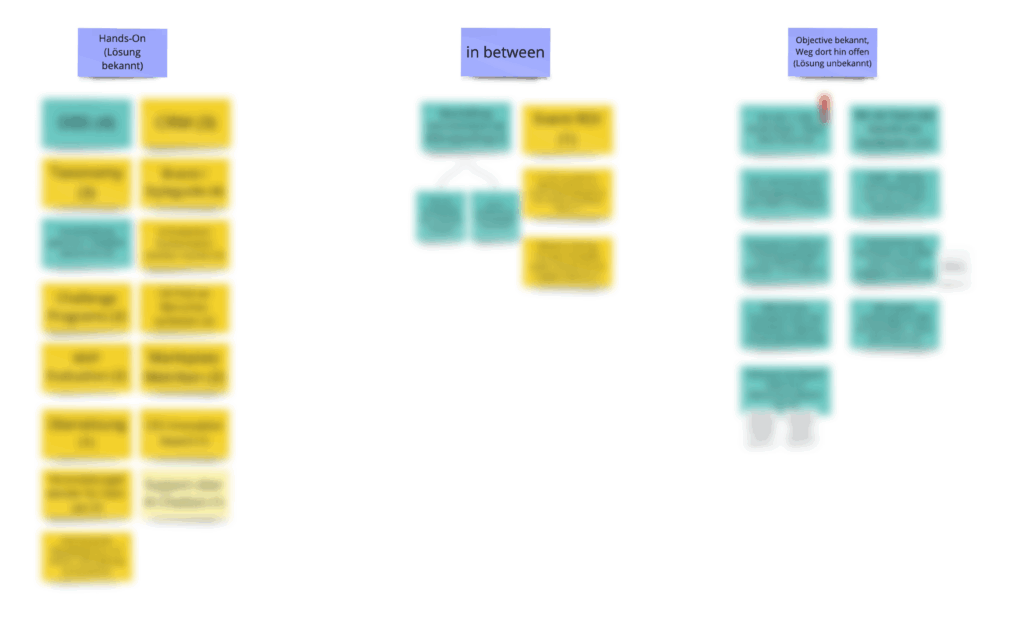
5. Understanding dependencies and making them visible
It’s great to have this overview of goals already, but how do they relate to each other? Are there dependencies? If so, how many are there?
Time to figure out the relations between the goals!
This step probably took the most time to get done — there were lots of iterations involved.
I started by building a horizontal tree diagram.
From the left to the right, I placed the top goals, all goals from the ‘Objective known, solution unknown’ category following up by all goals from the ‘Hands-On — solution known’ category.
[General goals and in-between goals can be ignored for now]
Next, I started connecting relating top goals, objectives and solutions with each other by asking two questions:
- Is this objective being solved or addressed of one or more of the already defined hands-on solutions?
- What Objective is this hands-on solution working towards?
[If you cannot identify it, ask yourself: Is this solution something you really need?]
For each objective & hand-on relationship, I used a different line color. At the end, each hands-on goal had one line spreading to one or multiple different objectives.
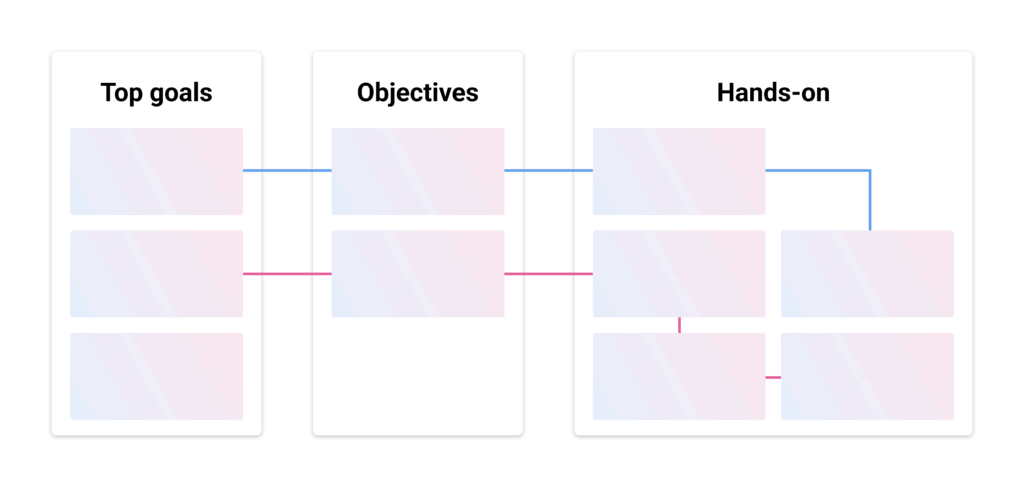
Finding out relations between goals does not need to be perfect. There is no way you can think of all dependencies right away — and no way those dependencies will stay the same within one year. So it’s not about perfectionism, but rather about generating an estimate.
Once this was done, I went ahead and marked how many dependencies I figured out per hands-on solution. This helps to clearly identify which solution is deeper inside the spiderweb of goals compared to others.
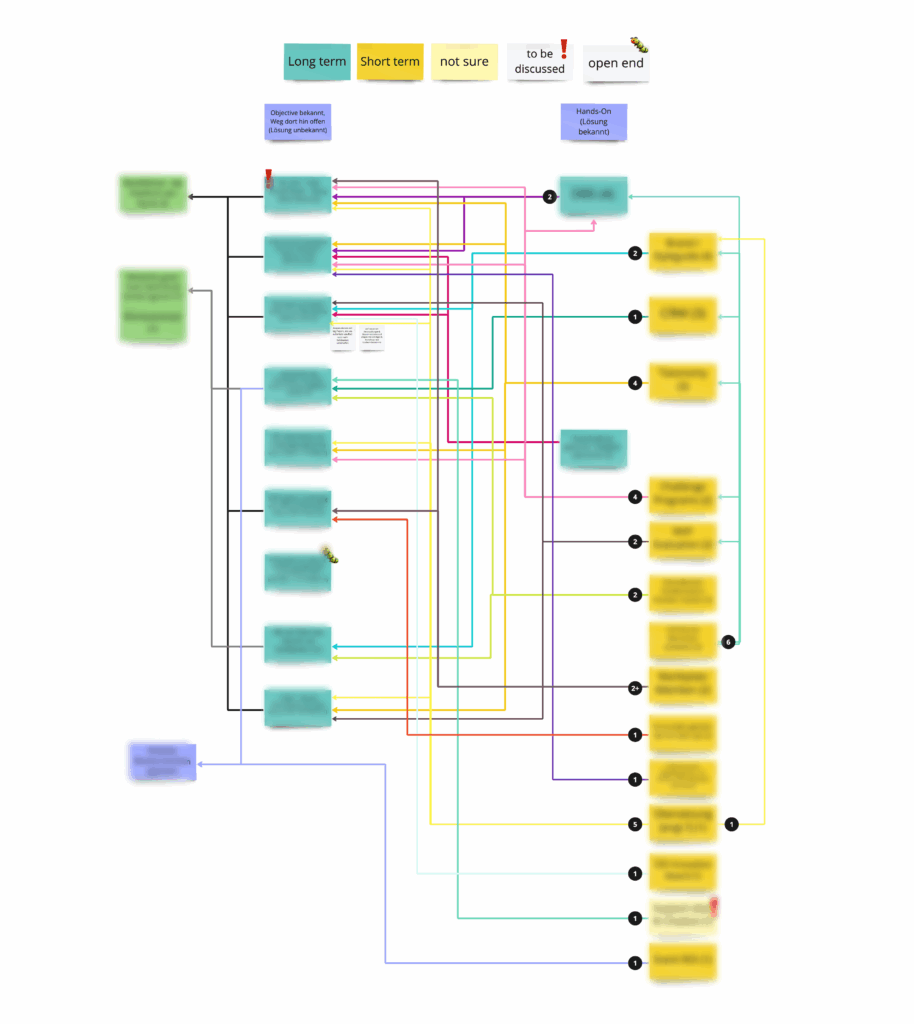
6. Strategy building
Now the final step awaits: Building the actual strategy.
When I did this, I worked with an underlying hypothesis:
The more dependencies there are, the earlier the issue needs to be tackled. The longer we wait to do this, the higher the risk someone will have a roadblock along the way and the result is delayed.
With this in mind, I aligned top goals, mid goals, granular goals and enabler on the y-achses of a diagram. The x-achses represents the upcoming four quarters.
Top goals can be used from step ‘3. Categorising goals’. Mid goals are the ones from the ‘Objective known, solution unknown’ category. The rest is either a granular goal or an enabler.
At this point, I introduced the enabler category for one reason:
Some goals are not just “jobs-to-be-done”. They are more radiant, shining into other goals. They need to be done as soon as possible, so that they enable other solutions and higher-level objectives.
You can usually identify them by the amount of dependencies, but depending on what it is you want to achieve they can also hide behind a lower amount of relations to other goals.
Enabler can be goals like “implementing a customer-relations-management tool” or “setting up analytics”. They lay important groundwork, which collect data, generate insights and thus enable further tasks that build upon it. Doing this, enablers usually benefit more than one discipline and are a interdisciplinary win.
Differing from this, granular goals usually have less dependencies, e. g. “win an award”. I also sorted granular goals into the several departments ‘business development’, ‘marketing & communication’, ‘supplier relations’ and ‘product’.
Once this is sorted, the bottom-up strategy is done (for now). 🚀
One last comment on how to read the strategy:
To avoid micromanagement, the strategy does not tell the departments when a goal should be worked on, but rather when we aim to achieve the goal.
[I suggest adding this next to the strategy, so that it is transparently communicated.]
This way, the quarters build a journey towards achieving the mid and general goals of your company. 🎉
Once you are done, present your status quo back to the team and challenge it together.
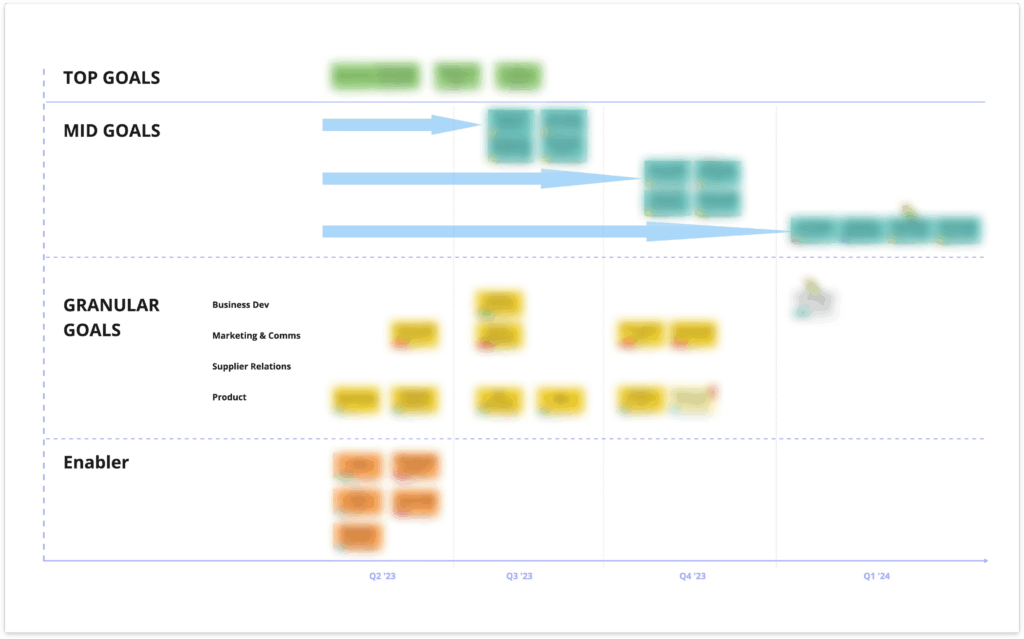
In a nutshell 🌰
By going through the six presented steps, a strategy is build upon the input from the entire team.
The how-to of the method is one thing. Another is the mindset it is done with.
At each point of the method, sparring with colleagues can be added. However, I think it’s important to collect requirements, wishes and goals upfront, then generate a first draft of the strategy and challenge it together. This way, the risk of getting lost in a loop of discussions is lower.
Don’t expect the draft to stay this way and last for the entire year, though. Strategies need to be able to flexibly adjust to the current situation, which can quickly shift — especially from a start-up perspective.
Also when new people join the team, they get to contribute to the process along the way.
However, a shift in strategy most likely address the granular goals — the solutions to your overall goals. There are always multiple ways to achieve your defined outcome, which still offer room for individualisation — multiple roads lead to Rome.
[This post was initially published on Medium, 08.09.2023]
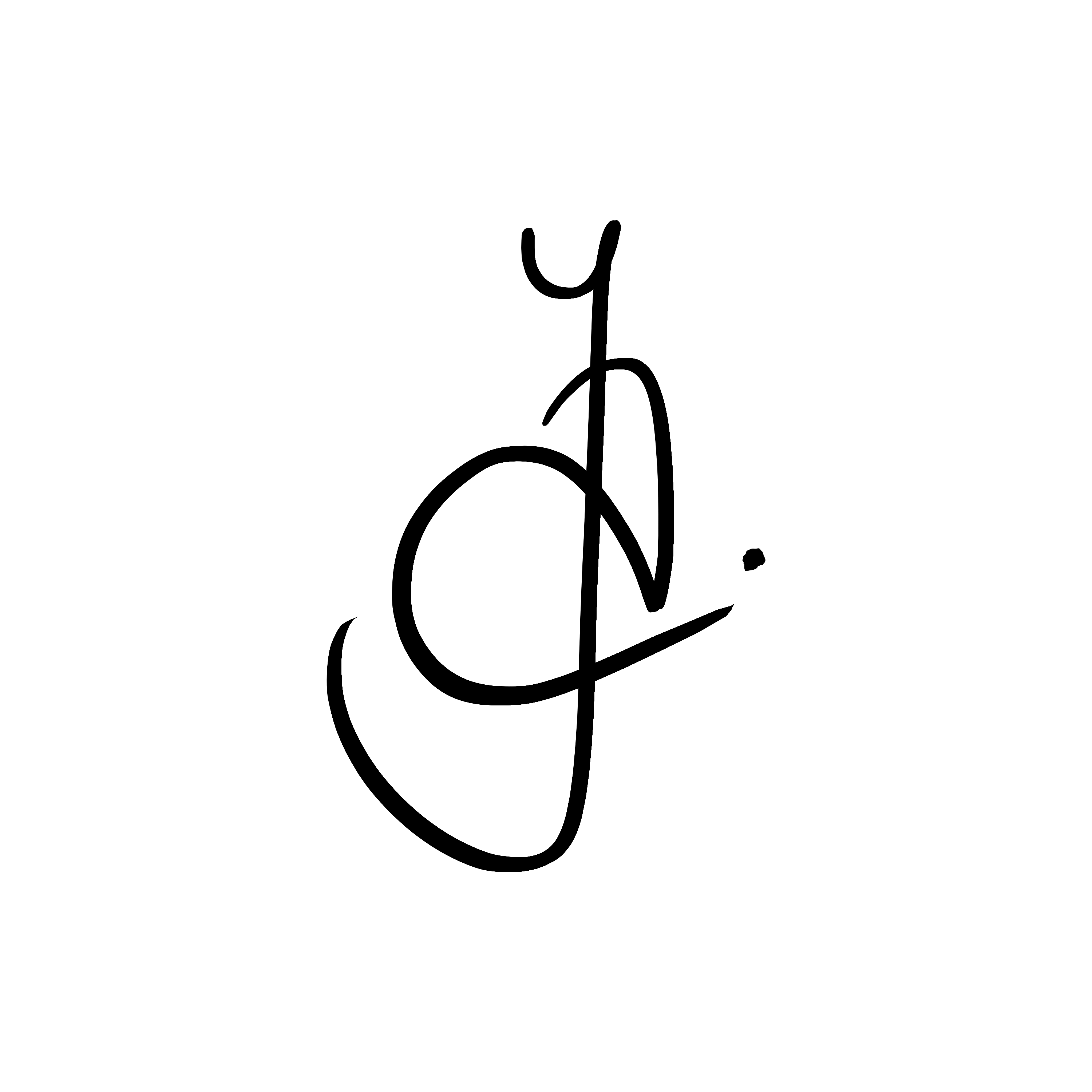

No Comments.